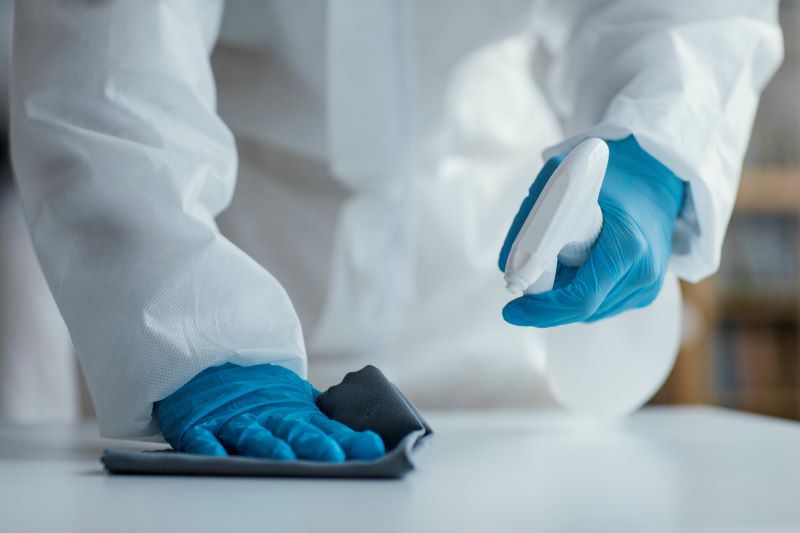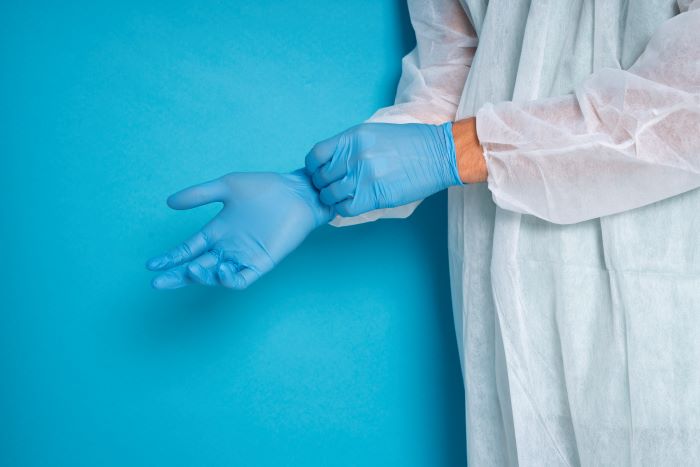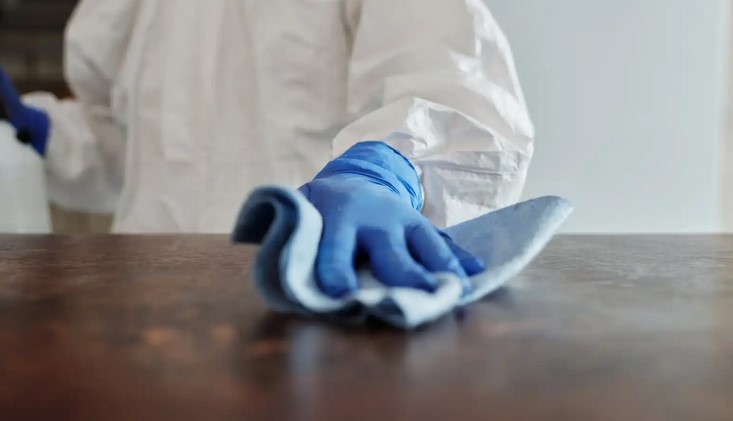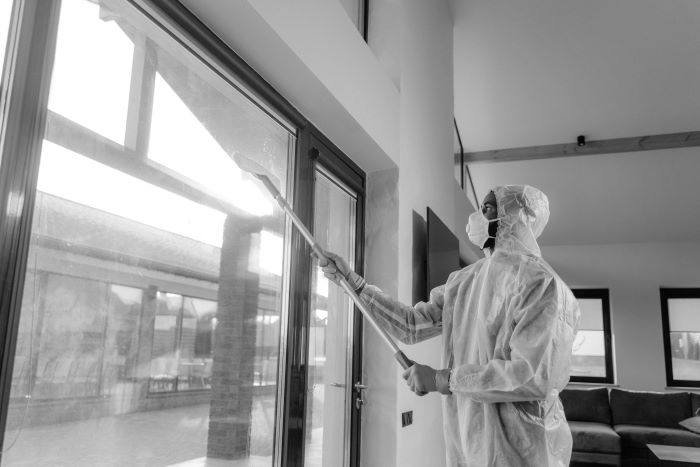Are you concerned about the spread of infections and want to ensure optimal infection control? High-level disinfectants play a crucial role in preventing the transmission of harmful microorganisms. In this article, we will explore the importance of infection control and delve into the specific role that high-level disinfectants play in this process.
High-level disinfectants are specifically designed to target a wide range of microorganisms, including bacteria, viruses, and fungi. Understanding the types of microorganisms that these disinfectants can effectively eliminate is essential for effective infection control. Additionally, we will discuss the proper application and usage of high-level disinfectants to maximize their effectiveness.
Safety measures when handling these disinfectants are also paramount. We will provide evidence-based information on how to safely handle and use high-level disinfectants to minimize the risk of harm. Lastly, we will evaluate the effectiveness of high-level disinfectants and highlight the importance of regularly assessing their performance to ensure optimal infection control. By following evidence-based practices and utilizing high-level disinfectants correctly, you can play a crucial role in preventing the spread of infections and promoting a safer environment for all.
Understanding the Importance of Infection Control

Understanding the Importance of Infection Control is paramount in ensuring optimal healthcare outcomes. Compliance with infection control measures plays a crucial role in preventing the spread of infections and reducing the risk of complications for patients. When healthcare facilities adhere to strict infection control protocols, it significantly impacts patient outcomes by minimizing the risk of healthcare-associated infections (HAIs) and improving overall patient safety. Studies have shown that proper infection control practices, such as hand hygiene, proper disinfection of medical equipment, and appropriate use of personal protective equipment, can reduce the incidence of HAIs and associated morbidity and mortality. By implementing effective infection control measures, healthcare providers can protect patients from preventable infections and enhance the quality of care provided. Therefore, understanding and prioritizing infection control is vital for maintaining a safe and healthy healthcare environment.
Exploring the Role of High-Level Disinfectants
Examining the role of high level disinfectants reveals their crucial contribution to maintaining a sterile environment and preventing the spread of harmful pathogens. High-level disinfectants play a vital role in infection control by effectively eliminating microorganisms that can cause infections. These disinfectants have been extensively evaluated for their effectiveness in killing a wide range of pathogens, including bacteria, viruses, and fungi. They possess strong disinfectant properties that enable them to penetrate and destroy the protective layers of these microorganisms, rendering them unable to replicate and cause infections. The effectiveness evaluation of high-level disinfectants involves rigorous testing to ensure that they meet the required standards for killing pathogens. The disinfectant properties of these products, such as their ability to rapidly kill microbes and their broad spectrum of activity, make them an essential component in maintaining a safe and sterile environment in healthcare settings.
Types of Microorganisms Targeted by High-Level Disinfectants
To effectively maintain a sterile environment, you need to know which types of microorganisms high-level disinfectants target. High-level disinfectants are designed to effectively eliminate a wide range of microorganisms, including bacteria and viruses. Bacterial resistance is a growing concern in the healthcare setting, and high-level disinfectants play a crucial role in combating this issue. These disinfectants are specifically formulated to destroy bacteria, preventing the development of resistance and ensuring optimal infection control. In addition to bacteria, high-level disinfectants are also highly effective against viruses. They are capable of inactivating various types of viruses, including enveloped and non-enveloped viruses. This broad spectrum of activity makes high-level disinfectants an essential tool in preventing the spread of infections and maintaining a safe and sterile environment in healthcare facilities.
Proper Application and Usage of High-Level Disinfectants

Properly applying and using high-level disinfectants is crucial for maintaining a safe and sterile environment in healthcare facilities. To ensure disinfectant effectiveness, it is important to follow manufacturer guidelines for application. Start by preparing the area to be disinfected, removing any visible dirt or debris. Next, apply the high-level disinfectant using the recommended method, whether it be spraying, wiping, or immersion. Make sure to cover all surfaces thoroughly and allow sufficient contact time as specified by the manufacturer. It is also essential to use the correct concentration of the disinfectant, as dilution can affect its efficacy. Additionally, proper ventilation is necessary to prevent the buildup of harmful fumes. Regularly monitoring and documenting the disinfectant application process is crucial to ensure compliance with infection control protocols. By adhering to these guidelines, healthcare facilities can effectively prevent the spread of infections and maintain a safe environment for patients and healthcare workers.
Safety Measures when Handling High-Level Disinfectants

When handling high-level disinfectants, make sure you take the necessary safety measures to protect yourself and others. Proper handling precautions are crucial to prevent any potential harm or accidents. Always wear appropriate personal protective equipment (PPE) such as gloves, goggles, and a lab coat to minimize exposure to the disinfectant. Ensure that you are working in a well-ventilated area to avoid inhaling any fumes. It is also important to read and follow the manufacturer’s instructions carefully, as different disinfectants may have specific handling requirements. Never mix different high-level disinfectants together, as this can create hazardous chemical reactions. Additionally, always store disinfectants in a secure and labeled location, away from children and incompatible substances. By following these safety measures, you can effectively handle high-level disinfectants while minimizing any potential risks.
Evaluating the Effectiveness of High-Level Disinfectants
Make sure you assess the effectiveness of high-level disinfectants to ensure the safety and well-being of yourself and those around you. Evaluating the efficacy of these disinfectants is crucial in preventing the spread of infections. There are various testing methods available to determine their effectiveness. One common method is the use of microbial suspension tests, where the disinfectant is tested against specific microorganisms. Another method is the use of carrier tests, where the disinfectant is applied to carriers that have been contaminated with microorganisms. Additionally, the use of in-use tests can also be helpful in evaluating the effectiveness of high-level disinfectants. These tests involve sampling surfaces that have been treated with disinfectant to determine if any viable microorganisms remain. By regularly evaluating the efficacy of high-level disinfectants, you can ensure that you are using products that effectively kill pathogens and protect against infections.
Conclusion
In conclusion, ensuring optimal infection control is crucial in healthcare settings. High-level disinfectants play a vital role in preventing the spread of harmful microorganisms. By targeting a wide range of pathogens, these disinfectants help maintain a safe and hygienic environment. Proper application and usage are essential to maximize their effectiveness. Additionally, it is important to follow safety measures when handling high-level disinfectants to protect both patients and healthcare workers. By evaluating their effectiveness, we can continuously improve infection control measures and safeguard public health.
